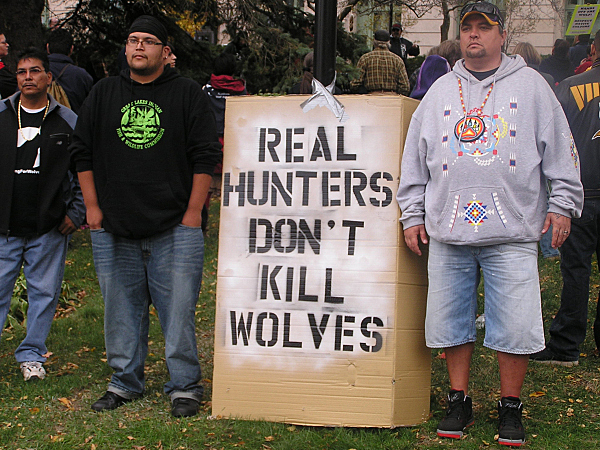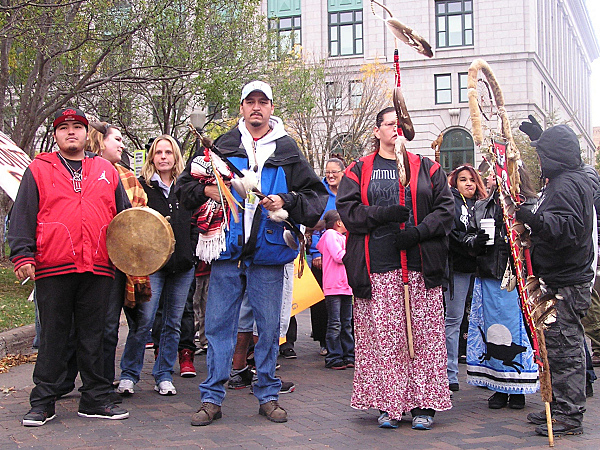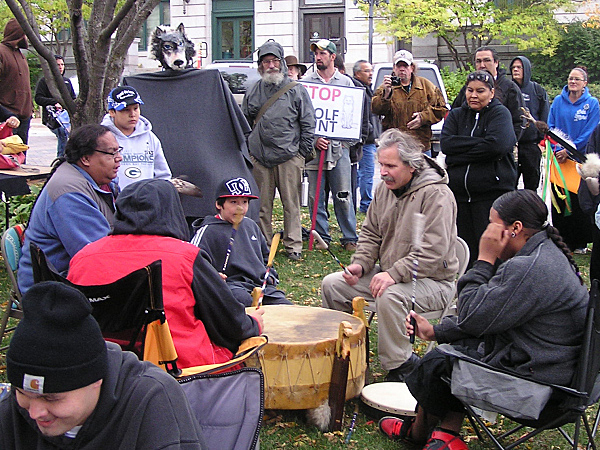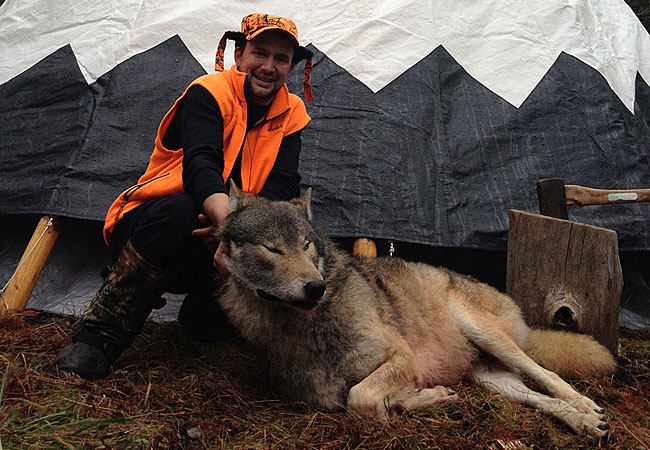



October 17, 2013
DULUTH, Minn. — The start of Minnesota's second licensed wolf hunt is less than a month away, and opponents are gearing up to try to stop it. A survey of the state's wolf population conducted after the inaugural hunt last winter showed a drop of more than 700 animals since the last population estimate in 2008. Despite that decline, state officials say the iconic animal is still thriving.
But hunting critics aren't convinced.
Last weekend about 70 people braved a cold rain to march through the streets of Duluth, howling their opposition to Minnesota's wolf hunt.
Many of the protesters were Ojibwe. For many of them, killing a wolf is unthinkable. The animal plays a central role in the Anishinaabe creation story and is often viewed as a family member, said Reyna Crow, co-founder of the Northwoods Wolf Alliance.
"Let's be honest," Crow said. "These are primarily white hunters killing the spiritual brother of the original people here."
Howard Goldman, director of the Humane Society in Minnesota, said the state authorized wolf hunting too soon after the U.S. Fish and Wildlife Service removed the gray wolf from endangered species protection in the Great Lakes region last year.
"We hunted them the same year they came off the list," Goldman said at a rally before the march. "These are recreational hunts. It's killing for sport, for trophies, for fun. There's no biological or management reason we're killing wolves."
The state Department of Natural Resources had planned to wait five years before holding a hunt. An advisory group had recommended the moratorium back in 2000, and the department included it in its wolf-management plan a year later.
But the state Legislature removed that waiting period in 2011.
DNR officials later described a "pent up demand" in the state to hunt wolves. Large Carnivore Specialist Dan Stark said the state took a conservative approach to the first hunting season.
"The long term goal for wolves is to assure that they'll continue to thrive here in the state," Stark said. "And we can do that in relation to having a regulated hunting and trapping season."
Wolf trophy
Following the hunt, the agency surveyed the state's wolf population and determined that the animal's numbers had fallen from 2,931 five years ago to 2,211, a drop of about 24 percent.
Stark said it's impossible to say how much of the decline was due to the hunting season. He said much of the drop was likely caused by a drop in northern Minnesota's deer population, the wolf's primary prey.
The DNR will continue to monitor how the hunting season affects the wolf population over the next several years and make adjustments to the number of permits it issues.
"With the most recent population survey, being lower than the previous survey, that's the closest number that we have in relation to the upcoming wolf season," Stark said. "So that's why license numbers and harvest limit is down for this coming season."
The DNR has cut the number of wolves that hunters can kill from 400 last year to 220 this year. It also will issue 3,300 licenses, significantly less than the 6,000 issued last year. That frustrates some hunters and trappers, said Gary Leistico, an attorney who represents the Minnesota Trappers Association.
"This is the second season," Leistico said. "I think in five years they'll know much more than they know now, and we believe that the harvest limits will probably be increased based on that knowledge."
In February, the Humane Society filed a lawsuit in federal court asking for endangered species protection to be restored to wolves in Minnesota, Wisconsin and Michigan. Hunt opponents also plan to push a bill in the Minnesota Legislature to reinstate a five-year moratorium on wolf hunting.
At the Duluth rally, Crow encouraged people to contact the DNR and Gov. Mark Dayton and implore them to suspend this year's hunt.
"I don't know what our chances are, but we can't stop to make every effort to do that," she said.
source

No comments:
Post a Comment